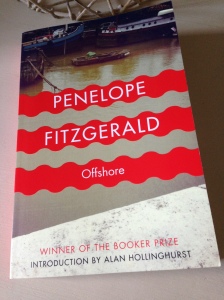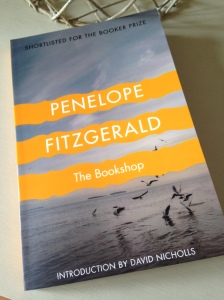Last year, I put together a couple of themed posts on my favourite novels set in hotels and boarding houses. They were fun to compile, and as several of you seemed to enjoy them, I’ve been meaning to do one on tea shops ever since. Alongside hotels, boarding houses and gossipy charladies, the presence of a tea shop in a novel is another strong selling point for me, especially if it’s a Lyons’ Corner House or a similarly characterful venue.
Just like hotels, boarding houses and trains, tea shops can provide writers with plenty of opportunities for interesting fiction, offering the potential for celebrations, drama, gossip or tension as people come together over tea and buns.
So, to cut to the chase, here are a few of my favourite novels featuring tea-shops (or afternoon tea), mostly from the mid-20th century.
Tea is So Intoxicating by Mary Essex
Ostensibly the story of a couple’s troublesome quest to open a tea garden in an insular English village, this delightful novel touches on various areas of British life in the years immediately following WW2. More specifically, it is a book about class, social attitudes, the pettiness of village life, and perhaps most importantly, the failure to recognise one’s own limitations.
The couple in question are David and Germayne Tompkins, who are relative newcomers to Wellhurst in Kent, the sort of village where everyone knows everyone else’s business. David is one of those men with big ambitions but precious little skill or knowledge to put his grand ideas into practice. He is also something of a self-conscious snob, forever envying other, more successful individuals for their achievements and contentment with life.
Naturally, the tea garden is doomed from the start; the villagers are opposed to the idea, viewing the Tompkinses as outsiders who have no right to be opening a commercial venture in their back garden, especially one with the potential to attract all manner of hikers and bikers to the village. As the novel plays out, we see just how much of a mess David gets himself into as preparations for the ‘Cherry Tree Cot’ tea garden lurch from one catastrophe to another.
In short, I loved this highly amusing novel, complete with its insights into the trials and tribulations of tea gardens and village life. There is more than a hint of Barbara Pym’s social comedies here, with their sharp observations on human relationships and women’s lives. Penelope Fitzgerald’s The Bookshop is another touchstone, particularly for the villagers’ territorial attitudes and resistance to outsiders heralding change.
A Long Way from Verona by Jane Gardam
This is a really lovely book, a thoroughly engaging coming-of-age story in the style of Dodie Smith’s I Capture the Castle, maybe with a hint of Shirley Jackson’s We Have Always Lived in the Castle in the mix for good measure. Set in a coastal town in North Yorkshire in the early years of the Second World War, Verona is narrated by Jessica Vye, a precocious schoolgirl with an utterly captivating voice.
Jessica has a small coterie of friends, all delightfully sketched by Gardam, who excels in capturing their body language and banter. In a hilarious early scene, Jessica insists that the girls visit the local tea room to mark the end of term. The trouble is, Elsie Meeny’s tea shop is virtually deserted – a sleepy, down-at-heel establishment somewhat diminished by the war. As such, Jessica’s dreams of a proper afternoon tea with fat chocolate biscuits and dainty eclairs are quickly dashed, a situation made worse by comparisons with another customer’s far superior tea!
As the novel unfolds, we follow Jessica as she tries to navigate her way through adolescence, negotiating various formative experiences along the way. What Gardam does so well here is to capture the conflicting emotions of being a teen, from the surety of knowing one’s own mind to the agony of being misunderstood and not fitting in. A wonderful novel with an undercurrent of darkness, especially towards the end.
At Freddie’s by Penelope Fitzgerald
Set in a London stage school in the early 1960s, At Freddie’s is another of Penelope Fitzgerald’s marvellous tragicomedies. Many of the familiar elements from the author’s early novels are here – isolated women; hopeless, befuddled men; precocious children – all caught up in a somewhat eccentric, idiosyncratic community. In this instance, the community revolves around the Temple Stage School, managed by the eponymous Freddie, an elderly matriarch and longstanding doyenne of the theatrical world. Once again, Fitzgerald has drawn on some of her own experiences to write this book – in this instance, her time spent as a teacher at the Italia Conti drama school during the decade in question.
Alongside the ups and downs of stage-school life, the novel features a subplot involving the school’s only proper teachers, Hannah and Pierce – and this is where the tea shop ultimately comes in. While Hannah is attracted to the romance and atmosphere of the theatre, Pierce has no interest whatsoever in dramatic pursuits. Instead, he is simply grateful to have found a half-decent job, knowing his own value (or lack of it) in the wider world.
As the weeks go by, Hannah and Pierce fall into a loose relationship with each other, one that seems doomed from the start. There is an excruciating proposal of marriage, followed by an even more desperate discussion in a Lyons tea shop, complete with waitresses itching to clear up and go home. Pierce is one of Fitzgerald’s classic hopeless men, painfully aware of his own tragedy but clueless about how to negate it.
In short, this is an excellent novel, both darkly comic and gently poignant, shot through with a deep understanding of the foibles of human nature.
Quartet in Autumn by Barbara Pym
First published in 1977, at the height of Pym’s well-documented renaissance, Quartet in Autumn is a quietly poignant novel of loneliness, ageing and the passing of time – how sometimes we can feel left behind as the world changes around us. (Now that I’ve read it twice, I think it might be my favourite Pym!)
The story follows four work colleagues in their sixties – Letty, Marcia, Edwin and Norman – as they deal with retirement from their roles as clerical workers in a London office. While that might not sound terribly exciting as a premise, Pym brings some lovely touches of gentle humour to this bittersweet gem, showing us that life can still offer new possibilities in the autumn of our years.
Alongside its central themes of loneliness and ageing, the novel also illustrates how difficult it can be to adjust to change, especially when we are older and set in our ways. Edwin, for instance, laments the changes that have occurred in a nearby teashop, one of his regular lunchtime haunts.
He had had a light lunch, snack really, in the teashop whose decor had changed distressingly, though the food was the same. Edwin and the other regular patrons felt themselves out of place among so much trendy orange and olive green and imitation stripped pine. There were hanging lights and shades patterned with butterflies and over it all soft ‘muzak’, difficult to hear but insidious. (p. 20)
It’s a lovely scene, full of the subtle observations that Pym conveys so well.
Jill by Philip Larkin
One of only two novels that Larkin wrote in his career, Jill is well worth seeking out. In essence, the novel focuses on John Kemp, a socially awkward young man from a Northern, working-class background who wins a scholarship to study English at Oxford University in 1940. Struggling to fit in with his rather arrogant upper-class roommate, Christopher, and the public school set who surround him, John invents an imaginary sister, Jill, in order to embellish his own life in the face of others. However, things get complicated for John when he meets Gillian, the fifteen-year-old cousin of one of Christopher’s friends, and the boundaries between the imaginary Jill and the real-life Gillian begin to blur…
I’m bending the rules a little with this one as it features afternoon tea in university halls rather than a tea shop, but it’s such a brilliantly observed scene that I couldn’t bear to leave it out! The novel is full of marvellous details and observations about the minutiae of student life in Oxford: the inevitable tensions that arise when mismatched boys have to ‘room’ together; the cribbing and last-minute preparations that ensue when essays are due; and the pilfering of items from other boys’ cupboards, especially when there is cake to be sourced for afternoon tea. (The section where John arrives at his room in Oxford features a terrific set piece!)
Overall, this is a moving, sympathetic portrait of a boy for whom certain aspects of life remain largely out of reach.
Do let me know your thoughts if you’ve read any of these books. Or maybe you have some favourite novels featuring tea shops that you’d like to share with others – I’m sure there are many more I’ve yet to discover, so please feel free to mention them below!










